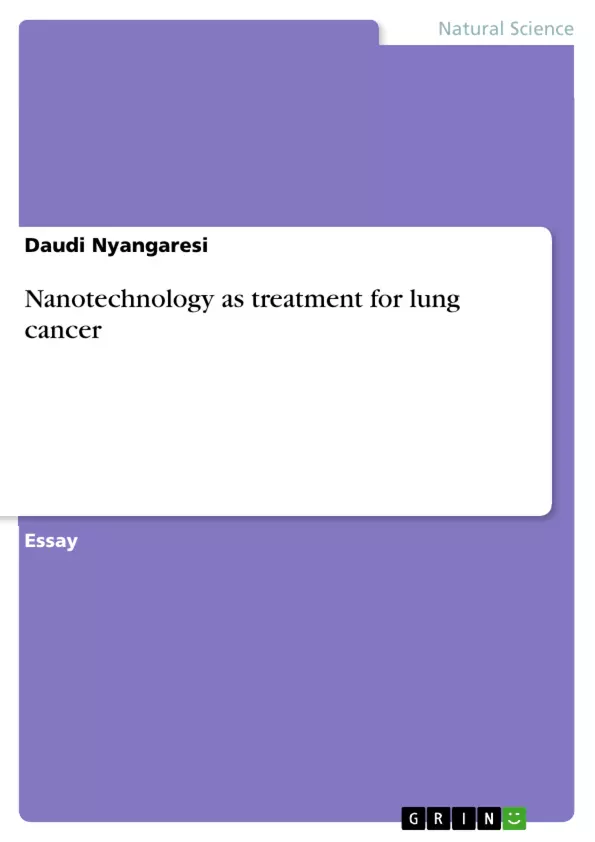This paper seeks to explore the development of proper drug delivery systems (DDS). In doing this, the researcher will look at a wide range of various other types of cancers and the various DDS’s used to create a better one on the basis of set criteria including type of nanocarrier, effective delivery, shrinkage of tumor, distribution of drug, biocompatibility/chemical reactivity and lastly possible side effects.
Previously, DDS’s took into consideration variety drug delivery systems including inhalable magnetic nanoparticles, hyaluronic acid–ceramide nanoparticles, personalized polypropylenimine (PPI) dendrimer, and stimuli-responsive clustered nanoparticles [12]–[15]. In the present study, the tactic of the DDS will encompass a hybrid constitution of numerous nanocarriers types that will be at the minimum of dual layers.
The utilization of nanotechnology in medicine has necessitated the creation of functionalized nanoparticles that can be utilized as carriers. Nanotechnology enables loading of the particles with drugs for delivery to specific locations in the body in a tightly controlled manner. As much as nanomedicine is quite new in the medical industry, some nanocarriers designed specifically for drug delivery have been in use for the past three decades.
Inhaltsverzeichnis (Table of Contents)
- Introduction
- Methods: Developing a Nanotechnology Drug Delivery System
- Overview of Nanotechnology Drug Delivery System
- Proposed Nanotechnology Drug Delivery System
- Effective Delivery
- Shrinkage of Tumor
- Distribution of the Drug
- Biocompatibility and Chemical Reactivity
- Side Effects
Zielsetzung und Themenschwerpunkte (Objectives and Key Themes)
This study aims to explore the development of a novel drug delivery system (DDS) using nanotechnology for lung cancer treatment, considering existing challenges and advancements in the field. It analyzes various nanocarrier types and assesses their effectiveness in delivering drugs to the target site, shrinking the tumor, ensuring biocompatibility, and minimizing side effects.
- Development of a nanotechnology-based drug delivery system for lung cancer
- Assessment of different nanocarrier types and their effectiveness
- Analysis of factors affecting drug delivery, such as tumor shrinkage and biocompatibility
- Minimizing side effects associated with drug delivery
- Comparison with existing drug delivery systems and their limitations
Zusammenfassung der Kapitel (Chapter Summaries)
- Introduction: The chapter provides a comprehensive overview of lung cancer, emphasizing its significant impact on global health and the need for improved treatment approaches. It discusses the different types of lung cancer, their prevalence, and the challenges associated with current treatment methods, highlighting the potential of nanomedicine as a promising alternative.
- Methods: Developing a Nanotechnology Drug Delivery System: This chapter delves into the fundamentals of nanotechnology drug delivery systems, exploring how nanoparticles are utilized as carriers to deliver drugs to target sites within the body. It emphasizes the importance of designing nanosystems that interact effectively with cells and adapt to disease progression.
- Proposed Nanotechnology Drug Delivery System: This section presents a detailed exploration of the proposed drug delivery system, focusing on its key features, including effective delivery, tumor shrinkage, drug distribution, biocompatibility, and chemical reactivity. It also discusses potential side effects and strategies to mitigate them.
Schlüsselwörter (Keywords)
The primary focus of this study is on the development of a novel drug delivery system using nanotechnology for lung cancer treatment. Key terms include nanomedicine, drug delivery systems, nanoparticles, lung cancer, tumor shrinkage, biocompatibility, and side effects. The study explores different nanocarrier types and their effectiveness in delivering drugs to the target site while minimizing adverse reactions.
- Quote paper
- Daudi Nyangaresi (Author), 2016, Nanotechnology as treatment for lung cancer, Munich, GRIN Verlag, https://www.grin.com/document/322067



